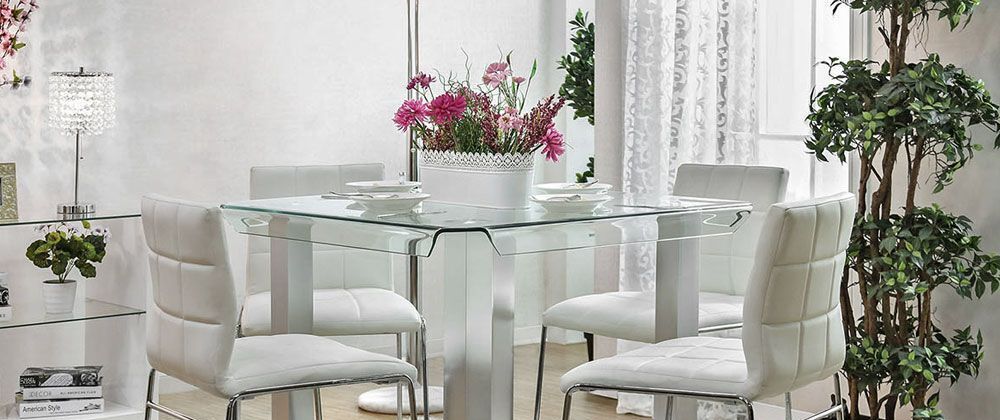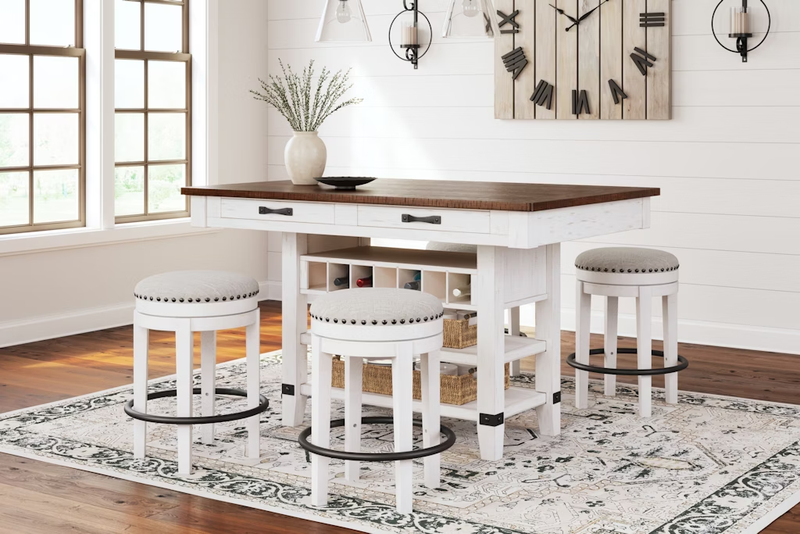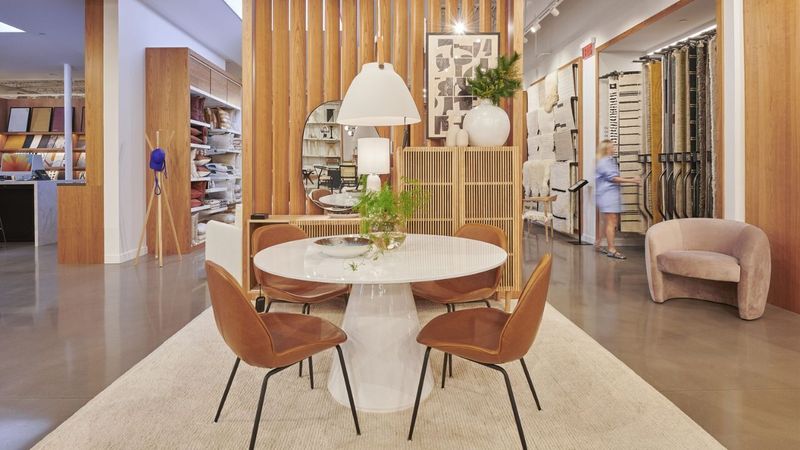The selection of dining furniture height plays an essential role in both comfort and design quality when you decide between indoor or outdoor installation. Homeowners frequently face uncertainty when deciding table elevations because they need to balance between functional needs and design preferences. Two primary furniture design choices exist today.
Standard dining furniture which reaches a previously established height serves as bar height table sets. The different benefits of these products can be better understood if you examine their specific applications.
Defining the Heights: A Quick Comparison
The height of dining structures differs with each setup pursuing distinct functional goals. You can find the taller kitchen table versions that complete modern patios or living spaces available between 40 to 42 inches in height. Standard versions of dining tables typically maintain a height range of 28 to 30 inches. Each type of seating requires a matching height so people remain comfortable while seated. Higher table layouts are designed with stools between 28 to 30 inches in height and standard setups feature seating at 17 to 19 inches.
Functional Differences in Daily Use
Spaces with standing conversations along with smaller apartments work best with elevated versions. These setups transform spaces by creating openness and raising user perspective while existing most often on balconies or entertainment zones. These versatile pieces work well in casual social settings as well as morning coffee periods and simple dining use.
Traditional meal times along with long relaxed dinners continue to be preferred through the use of the traditional dining option. This dining furniture works well in family-focused homes because it allows extended comfort during dining occasions.
Style Preferences and Design Impact
When you increase the height of furniture elements you receive a design style that resembles modern urban spaces. Their design works well with minimalistic homes and urban or contemporary outdoor spaces and loft-style apartments. A room obtains heightened appearance with structural elegance through their dimensions.
Standard height furnishings maintain enduring aesthetics which stand in opposition to elevated pieces. The furniture design suits various home designs including modern spaces and classic settings along with rustic and cozy dining rooms. These kinds of furniture avoid clashing with traditional items when they share spaces.
Comfort Levels and Ergonomics
Table height rules more than chair materials or design when determining ease of dining. The heightened arrangement positions people into vertical seating which benefits socialization although it fails to support restful lounging. The stools fitted with elevated arrangements have insufficient backrests or seat cushioning which makes them ill-suited for enduring positions.
Old-fashioned seating setups provide better comfort during use. The lower elevation of the seat makes it simpler to maintain a relaxed posture during long dining sessions while protecting your spine and legs. Traditional furniture arrangements work for all age groups starting from children to seniors.
Versatility and Space Considerations
Settling on elevated dining furniture works best when space sizes are confined. Rising vertical architecture generates additional visual space that complements both kitchen areas and compact balconies. These pieces can be found in tight living spaces where you share food preparation areas with your work and dining spaces.
Traditional dining furniture establishes itself comfortably inside family spaces or dedicated dining areas of homes. This dining furniture provides ample surface area while comfortably fitting big groups enabling regular use at large holiday get-togethers and everyday meals during busy seasons.
Material and Maintenance Factors
A piece's longevity together with maintenance requirements depends heavily on its material selection. Elevated dining furniture uses metal frames together with tempered glass and weather-resistant woods as primary materials. The chosen materials work for outside environments and provide simple cleaning methods which prove crucial for areas with high humidity or strong exposure.
Traditional dining furniture pieces either use solid hardwood materials or veneers or engineered wood construction. These types require some attention for stain and scratch protection as well as normal wear maintenance but they develop appealing personalities over time while adding room warmth.
Practical Use in Indoor vs. Outdoor Settings
The elongated form finds its peak use in outdoor areas. Guests can easily stand or sit on these taller furniture pieces because of their design which allows for comfortable viewing interactions without losing their sightline. The design finds its place as bar furniture as well as decorative additions to both home entertainment spaces in basements and casual areas like bars.
It proves most effective at standard height when placed within indoor spaces. This style of three-piece furniture performs ideally in dining rooms combined with open-plan kitchens as well as breakfast nooks. It adapts well to multiple seating alternatives alongside numerous decorative elements.
Who Should Choose What?
The elevated design suits people who prioritize quick dining and friend hosting and space optimization needs. Modern residential and compact living settings commonly adopt this design because of its contemporary style and vertical property arrangement.
Your pursuit of comfort together with adaptability as well as timeless beauty will lead you toward choosing the classic layout. The floor plan design can work for substantial rooms while supporting different recreational activities that range from formal dining to family gaming.
Durability and Long-Term Use
Companies design high models to be both practical and simple to use. The seamless design of these frames achieves weight reduction which leads to improved portability. The need for regular checks on stability increases when outdoor materials are concerned.
Classic designs provide better durability compared to their counterparts. These heirloom-worthy dining sets consist of heavy materials because they were made for extended utilization across different generations if properly maintained.
Final Considerations Before Buying
You should evaluate who uses the furniture most frequently before you decide to buy it. What do you need furniture for – a tiny studio apartment or an extended dining space for your family? Do you choose a unified open-concept space design or an independent dining sanctuary? These questions create a path for your purchasing decision.
Also, measure your space carefully. Your furniture purchase decisions must include consideration of how much space chairs need to move and how proportions will affect visual aspects. The proportion between room design elements and furniture creates visual clashing since physical dimensions do not guarantee psychological harmony.
Conclusion: Choose What Suits Your Lifestyle Best
Your choice of furniture should convey the way you live while elevating the feeling of home. Homeowners who like their spaces to be raised and contemporary in style will likely benefit from choosing taller furniture formats. A regular height table delivers the functionality and style needed for those who value timeless design with all-day comfort and prioritize family-centered dining spaces.








Top comments (0)